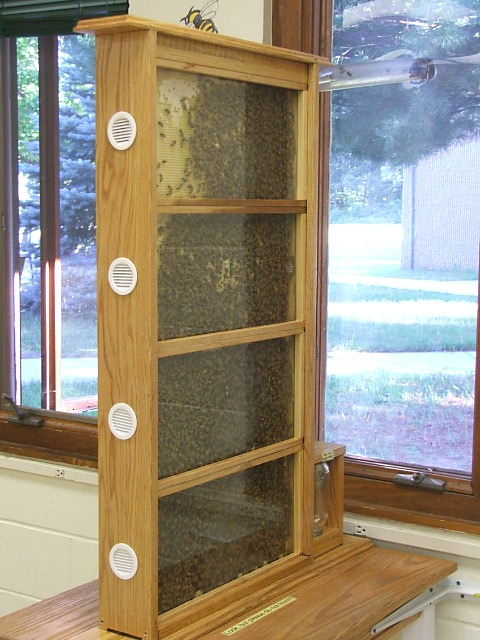 |
 |
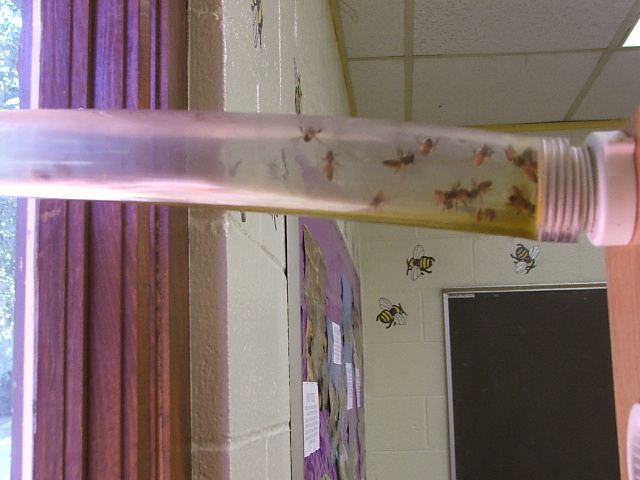 |
| The hive is built out of red oak. The
white circles on the back of the hive are plastic air vents. There are
also four of them on the front (towards the window). the building's
window was replaced with Plexiglas and a hole cut through it allowing the
clear PVC tube entrance tube to pass through. The entrance is just
above the top frame of bees. There is a groove cut in
the board at the base, which allows the bees to pass to the feeder area.
The whole hive is bolted to the table, and the table is fastened to the wall
to prevent it from tipping. The following
section shows a little how the hive works and how it is taken apart for
working with the bees: |
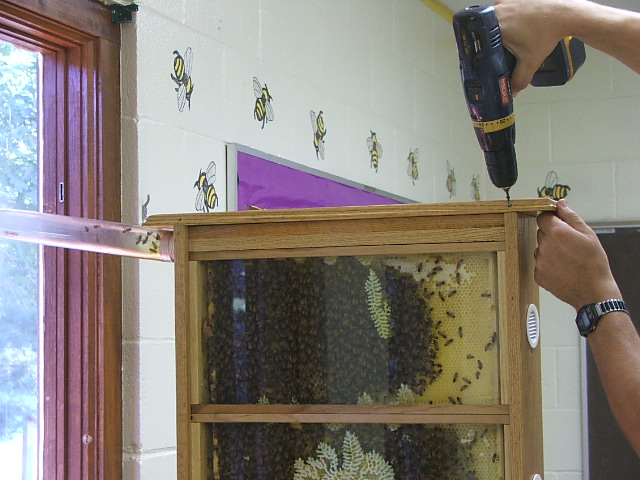 |
 |
 |
| First, the the top (outer
cover) must be removed. It is screwed on using four square-headed
finish screws. The top just sits above the hive's inner cover. |
 |
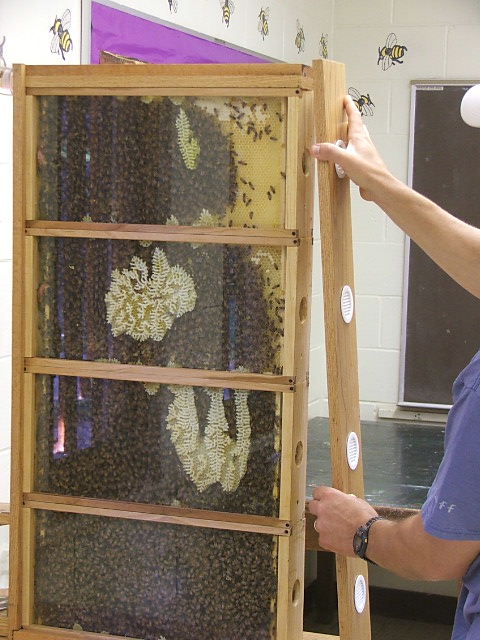 |
 |
| Next, the back (away from
the window) must come off. The back is held in place with two square
head finish screws at the bottom and the screws that hold the top (outer
cover) on also hold the back on. The individual frame modules fit into
a groove that I dadoed into each the back and the front (towards the
window). Also, each module has a hole drilled into the end which lines
up with the plastic vents on the front and back. The modules then have
a piece of screen stapled over each vent hole. Each module is open at
the top and the bottom to allow the bees to travel between the different
frames. The top frame has an inner cover over it, which keeps the bees
from escaping out of the top and also allows access to the entrance tube. |
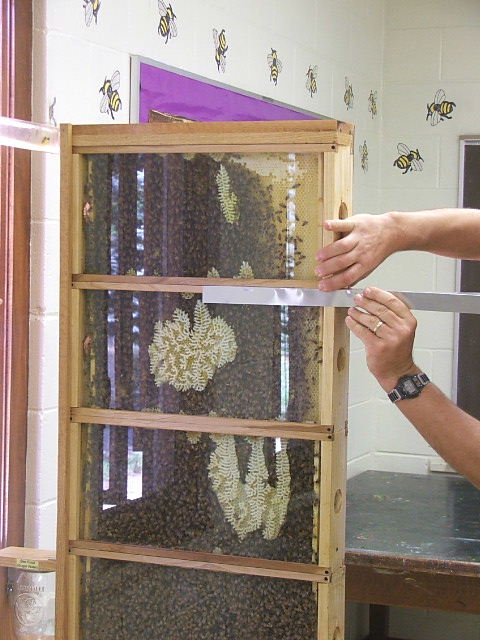 |
 |
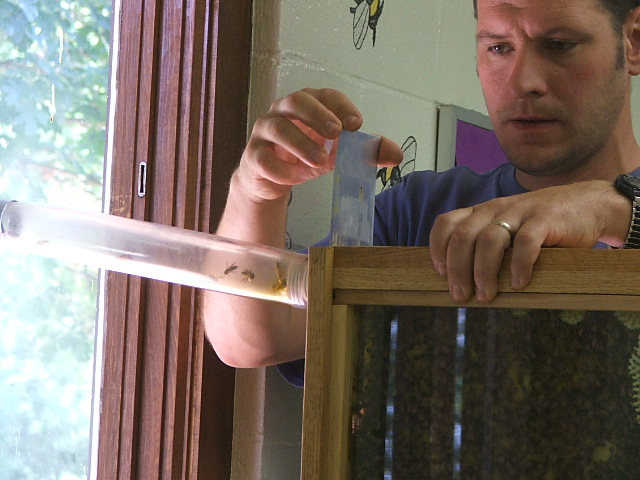 |
| Then I slide a U-shaped
piece of aluminum flashing into the crack between the top and the 2nd
modules (above left). This separates the top of the hive (and the
entrance) from the rest of the hive. In this picture, I put the first
flashing in with the "U" facing down, but it doesn't matter which one is
inserted first. After the first piece of flashing is inserted, I
insert a second piece above it (with the "U" facing up)(above middle).
The flashing is held in place with just the force of the bend in the
flashing squeezing the module. the top piece of flashing prevents the
bees from moving down out of the top module and the bottom piece prevents
the bees from moving up out of the rest of the hive. Another piece of
flashing bent to fit into the dadoed groove in the front (toward the window)
is inserted between the front and the top module (above right) and is held
to the front. A piece of flashing is also bent to cover up the
entrance hole in the inner cover on top of the top module (not shown) to
prevent the bees from escaping while the module is removed. |
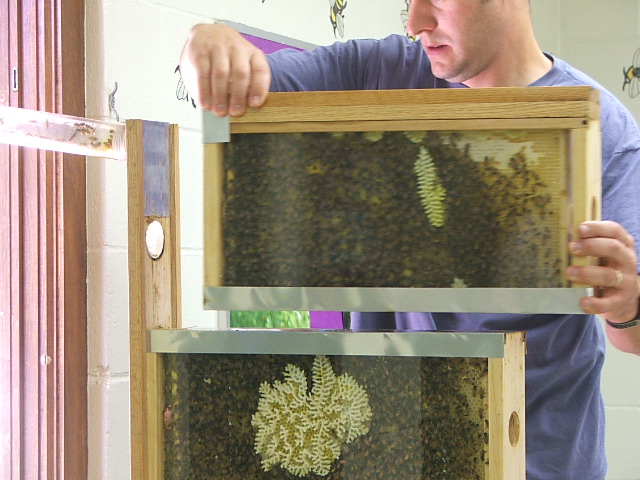 |
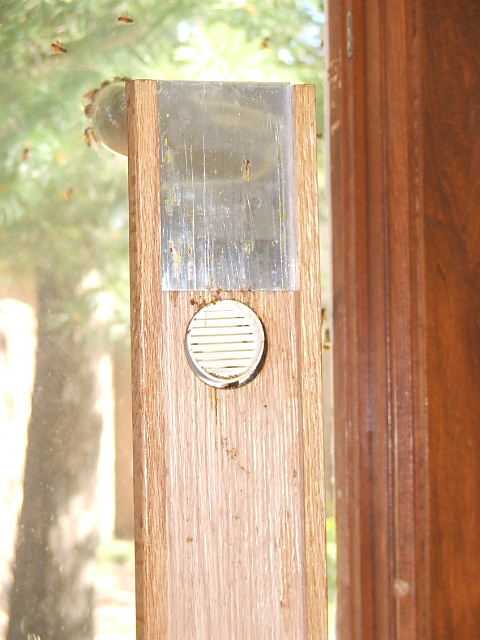 |
 |
| At this point, the bees are
entirely contained in the hive. The top module can be carefully
removed (left). The center picture (above) shows the inside of the
front (toward the window) with the flashing piece covering the entrance.
Since many bees were out foraging at the time the entrance was covered, they
tend to fill the tube waiting to come back in (right). the dado in the
front piece can also be seen here. |
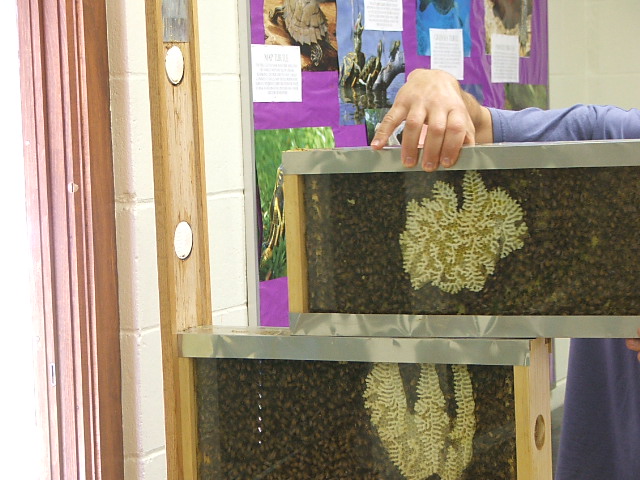 |
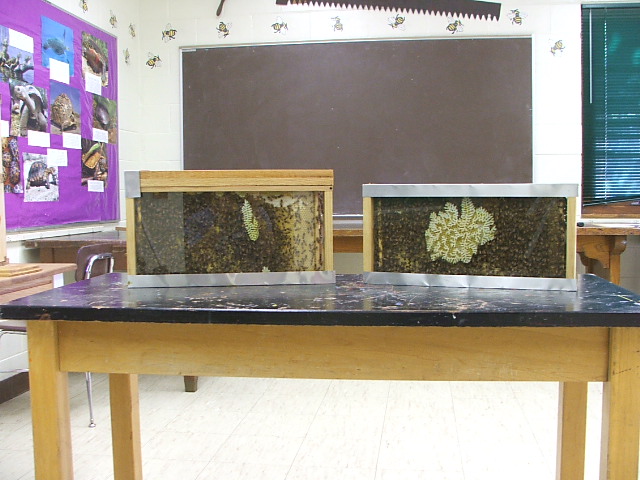 |
|
| Flashing pieces are then
inserted between the second from the top and third frames and the send frame
can be removed (left). Right hand picture shows the top two frames in
the room with no bees flying around! |
 |
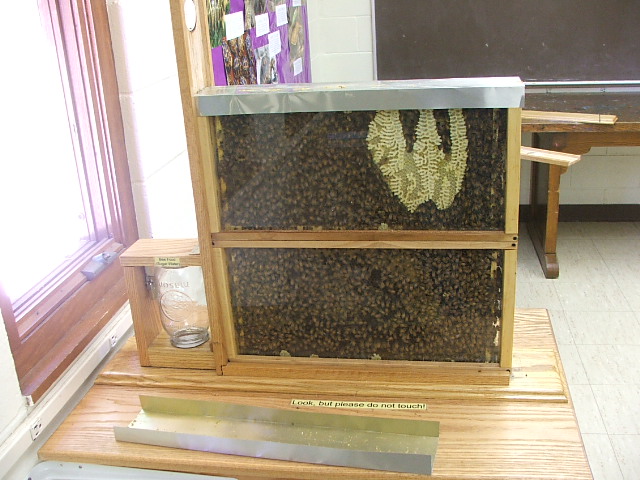 |
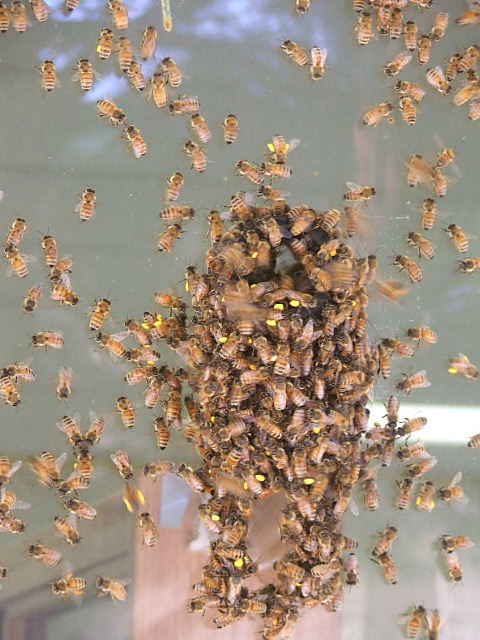 |
| Above pictures show the
bottom two frames in place with the top frames removed. The middle
picture also shows one of the flashing divider pieces upside down on the
table. Meanwhile, the foraging bees have filled the tube and are
clustered outside on the entrance (right). |
| I have enough flashing to
allow me to remove the top three frame modules at one time. I then
suit up and take the modules outside the window to work them. I
usually remove the flashing divider, then remove the frame, then scrape the
glass with a hive tool to remove burr comb. While they are outside, I
can take the flashing divider back inside to remove the bottom module.
During removal of the bottom frame, it is possible for a small number of
bees to escape, since some may be in the area of the sugar syrup feeder,
which I have not found a way to close off yet. |
| I put the hive back together
in the opposite order. The only difference is that I often stack two
modules together outside and bring them in as a pair with the flashing
dividers covering the top opening and bottom opening. The modules can
also be removed two at a time, but they tend to get heavy very quickly! |
 |
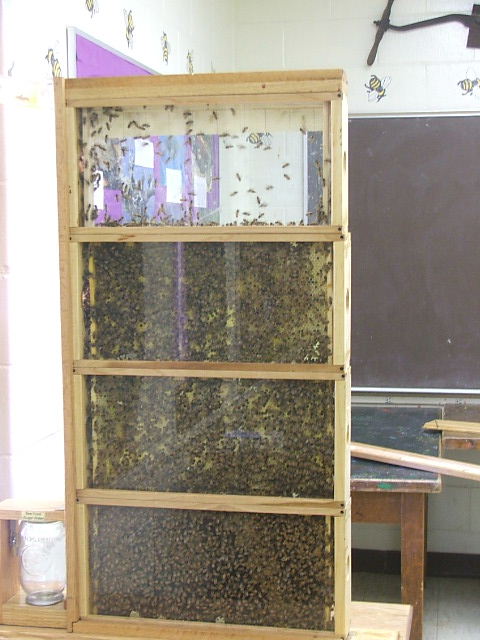 |
|
| By the time the entrance is
once again opened, the bees have already clustered all over the window
(left). The hive is back together (right) except the back and the top
(outer cover) need to be screwed back on. |
| I am experimenting with the
top frame. I modified a frame by angling the top bar. I then put
a 1" strip of foundation in. The idea is that the bees will start
drawing out the comb at the top and will continue without foundation.
This encourages the bees to draw out natural size cells, rather than the
size specified by the foundation. So far, they aren't drawing much of
it out, but the jury is still out. |